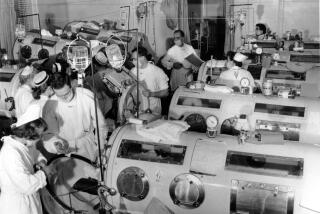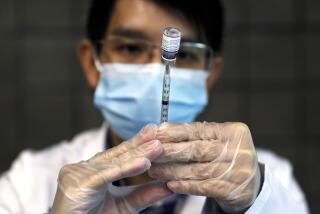Influenza: What’s the point of making good, safe vaccines if people won’t accept them?
- Share via
That H1N1 pandemic....no, it didn’t lead to bodies piled high in the streets. But the point is, it could have -- pandemics sometimes do. And were we prepared? No, we were not.
That’s the bottom line of a perspective published in the New England Journal of Medicine right before Thanksgiving when our thoughts of birds had all to do with feasts and not the influenza A viruses many wild ones naturally harbor.
The commentary, which you can read in full on the Web, was penned by three scientists at RAND in Santa Monica and its main theme was vaccine acceptance. Certainly, they write, one of the problems with the H1N1 vaccine was how long it took to make it -- the virus emerged in the public consciousness in March 2009 but the vaccine wasn’t ready for sizeable distribution until December 2009 -- speedy, as flu-vaccine ramp-ups go, but not speedy enough. “By that point, the pandemic had passed its peak, and public demand for vaccination was in swift decline. In the end, manufacturers were left with 70 million unused doses.”
But there’s another big point here, the scientists say: You can ramp up all you want on technology but unless you get people to get the vaccine it’s not going to help too much.
Only about 20% of U.S. adults got the H1N1 vaccine, they note. And fewer than half of healthcare workers got it. (Here’s a recent item we ran on the issue of mandatory flu vaccines for healthcare workers.) The scientists note that their surveys, and those of others, reported that many people said they’d refuse an H1N1 vaccine even at a time when the pandemic was an unknown quantity and people were a lot more scared.
So if public acceptance is key, how much money goes toward figuring out how to get people to accept influenza vaccines? Not much, the authors note. Over the last decade, less than 5% of the public money spent on influenza and influenza vaccine research goes toward social and behavioral science (it mostly goes to biomedicine. Tweaking that ratio “will yield substantial returns,” they say.






